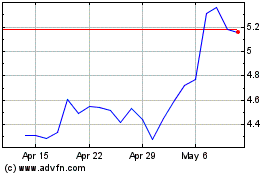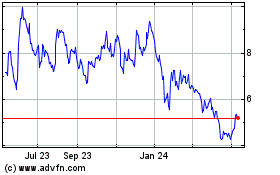Fewer plans, strict new enrollment rules,
and increased costs complicate insurance options for college
grads
Today eHealth, Inc. (NASDAQ:EHTH), which operates eHealth.com, a
leading private online health insurance exchange, outlined the
challenging health insurance landscape for this year’s college
graduates, and provided shopping advice and insurance product data
for would-be shoppers.
Young adults frequently purchase health insurance on their own
after leaving college, though many anticipate becoming eligible for
other forms of coverage (such as employer-based coverage) in the
future. Ongoing voluntary surveys of eHealth shoppers show an
increase every spring/summer (compared to the fall) in the number
of recent college grads under age 24 who expect to only need
individually-purchased coverage for less than a year:
Question: “How long do you expect to
need coverage?”
Surveyed May-August 2015
SurveyedSeptember-October2015
Surveyed May-August 2016
SurveyedSeptember-October2016
“Less than 12 months” 64% 54%
69% 58%
“12 months or more”
36% 46% 31%
42%
Young men and women graduating from college this year will find
themselves in an unprecedented situation. Many may have difficulty
finding, qualifying for, or affording self-purchased health
insurance – especially with the recent uncertainty in the health
insurance market.
Here’s why:
- There are fewer major medical plans
available. Some major insurance companies have left the
individual health insurance market. In nearly one third of U.S.
counties, college grads may have only one insurance company to
choose from for Obamacare-compliant coverage. By 2018 shoppers in
several states may have none at all.
- There are stricter enrollment
rules. In February 2017, the Centers for Medicare and Medicaid
Services issued rules that make it more difficult for applicants to
claim they have experienced a qualifying life event allowing them
to purchase coverage outside of the annual open enrollment
period.
- There are new restrictions on
short-term health plans. Short-term health insurance plans
provide a limited but valuable option for those who do not qualify
for or cannot afford major medical coverage, but new rules that
took effect in April 2017 reduced the maximum coverage period for a
single policy from 12 months to three months.
- The cost of major medical coverage
continues to increase. As reported in eHealth’s most recent
Price Index Report, the average monthly premium for individual
unsubsidized major medical health insurance increased 18% between
2016 and 2017, or 39% since the 2014 open enrollment period, when
major provisions of Obamacare first took effect.
Top 5 Health Insurance
Tips for 2017 College Grads
1. Mom & Dad’s plan – When to say “Thanks but no thanks”
- Current law allows your parents to keep you on the family
health insurance plan until your 26th birthday, and many grads get
covered that way. However, buying coverage on your own may make
more sense if you live in a different city without access to the
network providers for your parents’ plan or if you can save money
by purchasing coverage for yourself that better meets your personal
needs.
2. Special enrollment periods – Use ‘em before you lose ’em
- If you want to purchase a major medical Obamacare-compliant
health insurance plan on your own, you need to do so during the
annual open enrollment period (which typically begins November 1)
or when you experience a “qualifying life event.” Graduating from
college is not a qualifying life event, but events such as
moving to a new city or state, losing qualified coverage that you
had before, getting married or having a child may allow you to
purchase coverage on your own outside of open enrollment.
3. Obamacare subsidies – Understand the risks and rewards
- As a single person, if you earn less than about $48,000 per
year, you may be eligible for government subsidies when you
purchase a major medical health plan. This can make your coverage
significantly more affordable, depending on your income. However,
keep in mind that your initial subsidy determination is based on
your estimated income for the year. If you end up earning
more than expected, you may be required to pay back some or all of
the subsidy dollars that were applied toward your monthly premiums
during the year. Proposals by Congressional Republicans may change
the way subsidies work, but income-based Obamacare subsidies are
still in place for now.
4. Obamacare taxes – Avoid the sting of an unexpected tax hit
- If you go without major medical health insurance for more
than two consecutive months during the 2017 calendar year, you may
be subject to an Obamacare tax penalty. The penalty for 2017 is
$695 per adult or 2.5% of your taxable income, whichever is
greater. Congressional Republicans’ health reform proposals would
do away with this tax penalty for going uninsured, but for now the
Obamacare tax penalty is still the law.
5. Obamacare alternatives – What is packaged medical
insurance? - Some people simply cannot afford to purchase major
medical coverage or they don’t qualify for coverage because they
haven’t had a qualifying life event. Where can you turn if you
still want some protection against unexpected medical bills? Other
insurance products that may be available year-round include
short-term health insurance plans, accident insurance, critical
illness insurance, dental or vision insurance, etc. These may be
purchased individually or conveniently purchased together as a
recommended package of medical insurance products. Coverage under
products like these can be significantly more affordable than major
medical coverage, but keep in mind that these plans will not
protect you from Obamacare tax penalties and do not typically have
Obamacare features such as coverage for pre-existing conditions or
the full set of minimum essential benefits required by
Obamacare.
How Much Does Health
Insurance Cost for 2017 Grads?
It helps to know what you’re looking at when it comes to the
cost of health insurance. Below, eHealth provides average premiums
and deductibles for major medical and short-term health insurance
plans selected by eHealth shoppers aged 20-25 during the 2017 open
enrollment period (November 1, 2016 through January 31, 2017).
These are aggregated averages for plans across the country, but you
can search for specific plans, premiums, and deductibles available
to you in your particular geographical area by visiting
eHealth.com.
For major medical coverage:
- $231 was the average monthly
premium
- $5,058 was the average annual
deductible
- $161 was the average monthly
premium for a catastrophic level plan
- $7,149 was the average annual
deductible for a catastrophic level plan
- $362 was the average monthly
premium for gold level plan
- $704 was the average annual
deductible for gold level plan
“Catastrophic” plans tend to come with higher out-of-pocket
costs and are typically only available to people under age 30.
“Gold” plans provide the second-highest level of coverage, in terms
of cost-sharing, among Obamacare-compliant major medical plans.
For short-term health insurance plans:
- $72 was the average monthly
premium
- $6,024 was the average annual
deductible
Short-term health insurance plans and other insurance products
that are not major medical plans provide limited coverage for a
limited period of time. They typically exclude coverage for things
like preventive medical care, pre-existing conditions, and
maternity care. It may be possible to be declined for such plans
due to a pre-existing medical condition. Despite this, short-term
plans and other insurance products that are not major medical plans
can still provide a valuable level of protection against unexpected
medical costs.
For more information about major medical costs and trends, refer
to eHealth’s Price Index Report for the 2017 Open Enrollment
Period.
About eHealth
eHealth, Inc. (NASDAQ: EHTH) owns eHealth.com, a
leading private online health insurance exchange where individuals,
families and small businesses can compare health insurance products
from leading insurers side by side and purchase and enroll in
coverage online. eHealth offers thousands of individual, family and
small business health plans underwritten by many of the nation's
leading health insurance companies. eHealth (through its
subsidiaries) is licensed to sell health insurance in all 50 states
and the District of Columbia. eHealth also offers educational
resources and powerful online and pharmacy-based tools to
help Medicare beneficiaries navigate Medicare health
insurance options, choose the right plan and enroll in select plans
online through Medicare.com (www.Medicare.com), eHealthMedicare.com
(www.eHealthMedicare.com) and PlanPrescriber.com
(www.PlanPrescriber.com).
For more health insurance news and information, visit
eHealth's Consumer Resource Center.
View source
version on businesswire.com: http://www.businesswire.com/news/home/20170524005373/en/
DMA Communications for eHealth, Inc.Sande Drew,
916-207-7674sande.drew@ehealth.comoreHealth, Inc.Nate Purpura,
650-210-3115nate.purpura@ehealth.com
eHealth (NASDAQ:EHTH)
Historical Stock Chart
From Mar 2024 to Apr 2024

eHealth (NASDAQ:EHTH)
Historical Stock Chart
From Apr 2023 to Apr 2024
